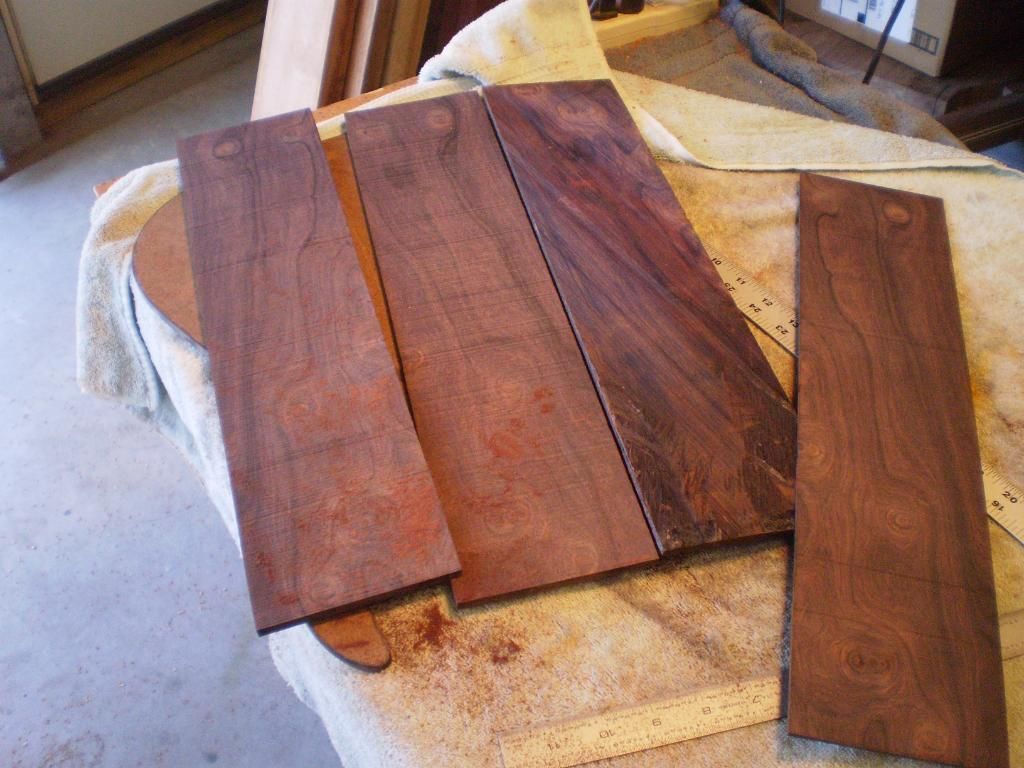
Routing trussrod channel. First I set the length of the rod and transfer the line around to the back of the neck. I use a router table and fence setup with a 1/4" spiral down cut bit. Since the neck blank goes face down I use a guide line on the fence to tell me when to stop. Line up the line on the neck with the line on the fence and you are done (the line on the fence is center of the bit.
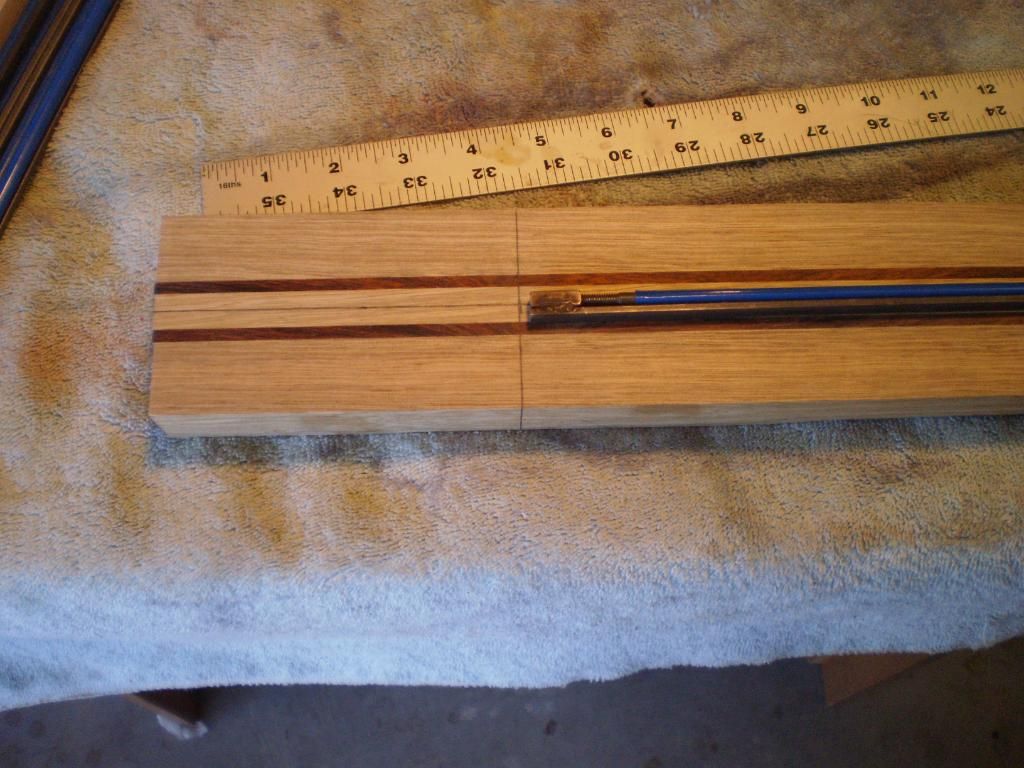
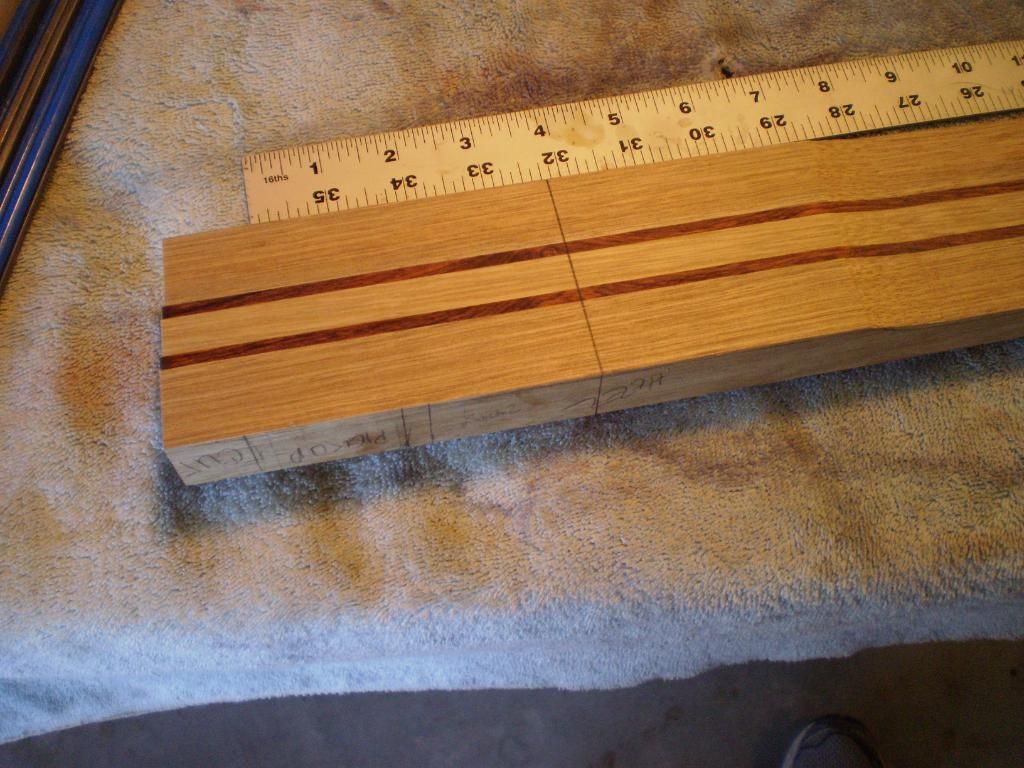
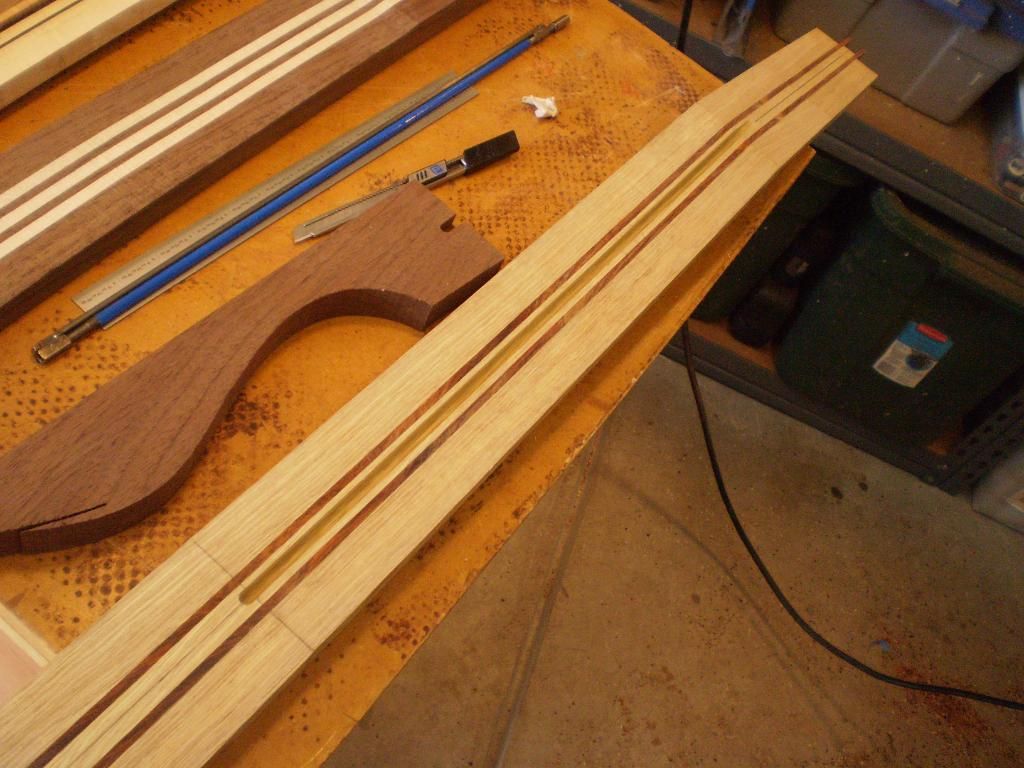

After routing I clean up the end of the trussrod route with a 1/4" chisel. I then round the headstock end with a 1/4" rasp chucked in a battery drill. I deepen the slot a bit at the end and headstock. This allows the trussrod to fit very snug (make sure it does not bind). When done right the only way to get the rod in is to slide it in from the headstock.
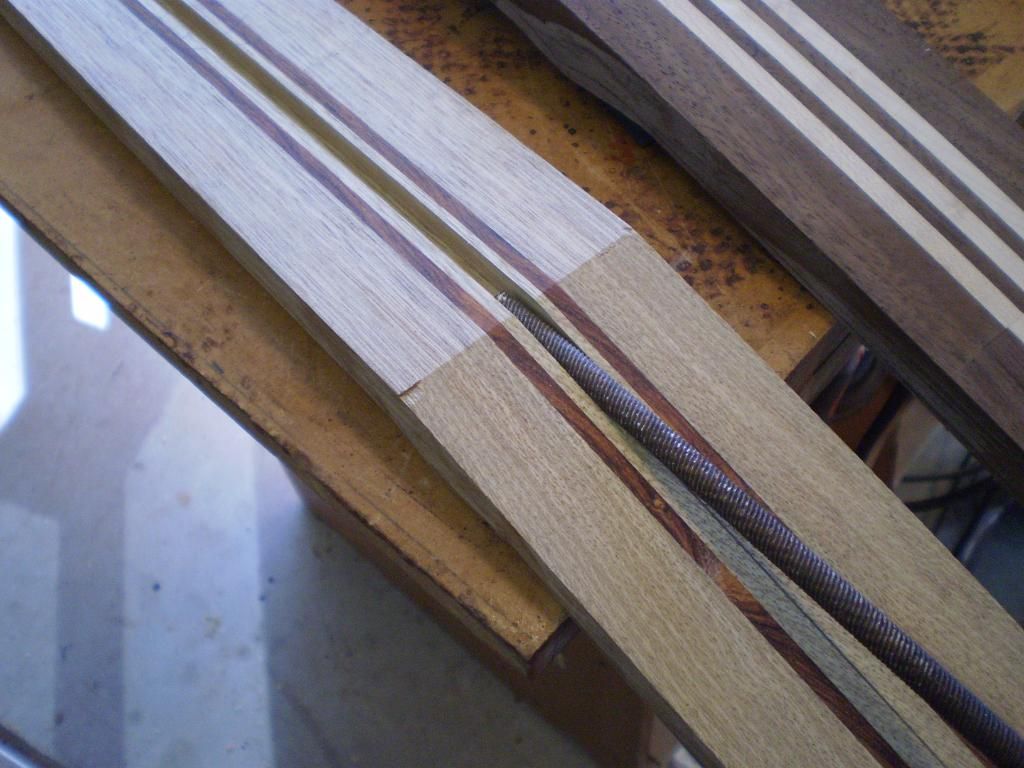

ALLPARTS rods are a bit rough when I get them so I clean up the ends on my diamond sharpener. Like this.

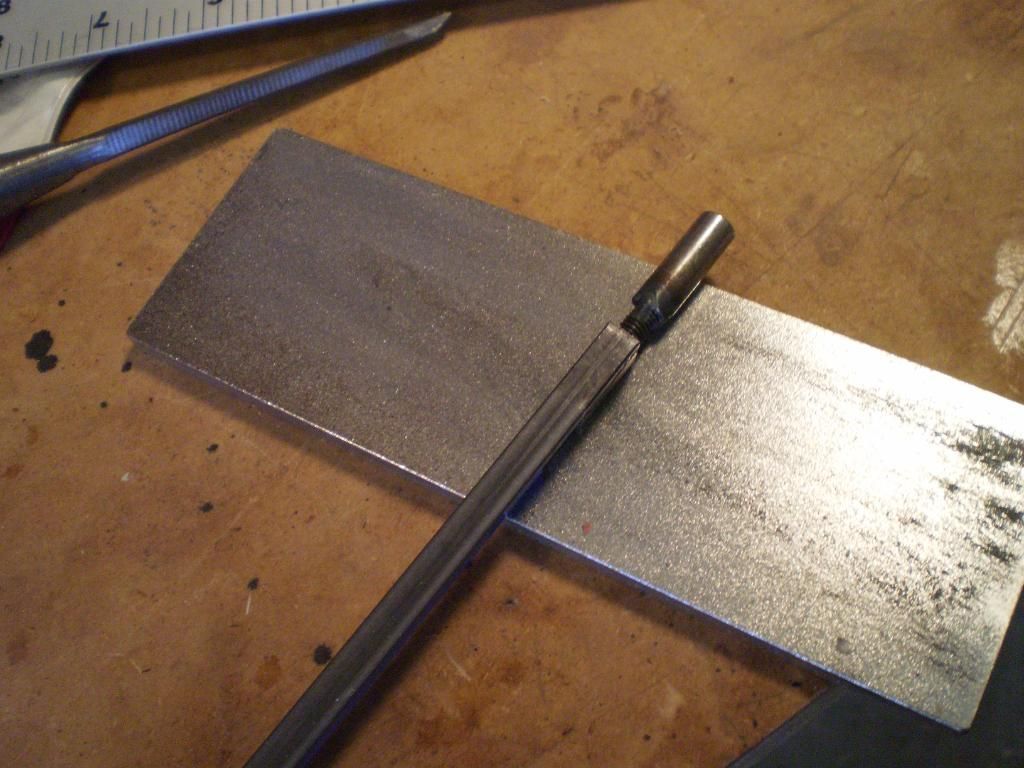
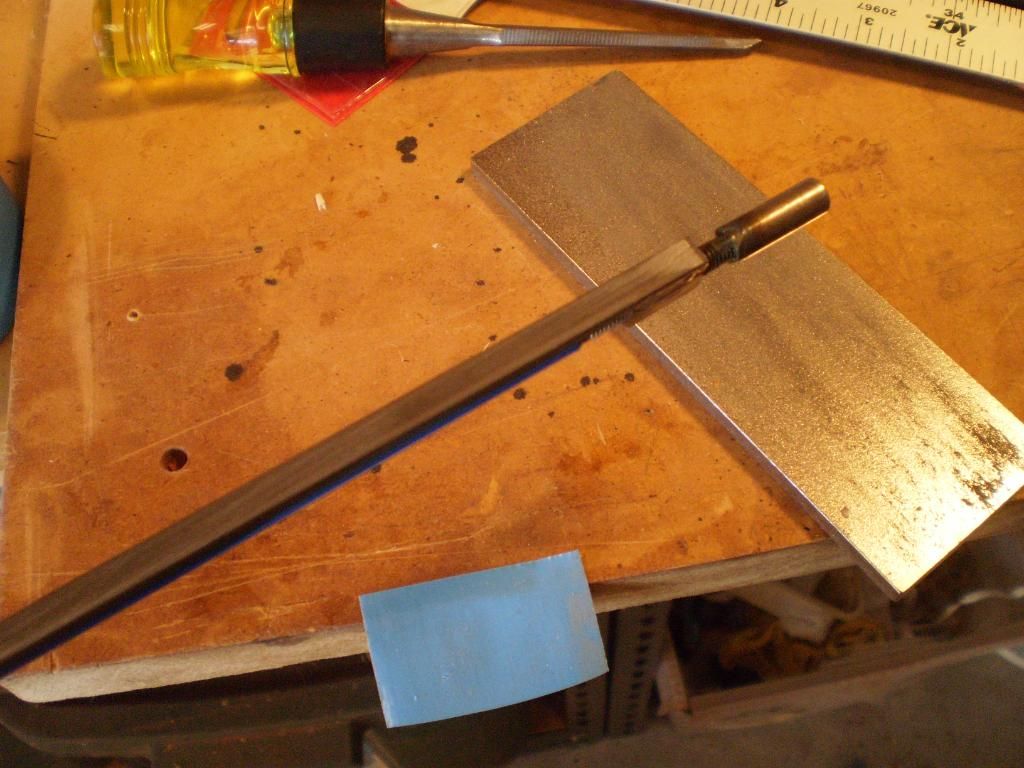

Trussrod installed.
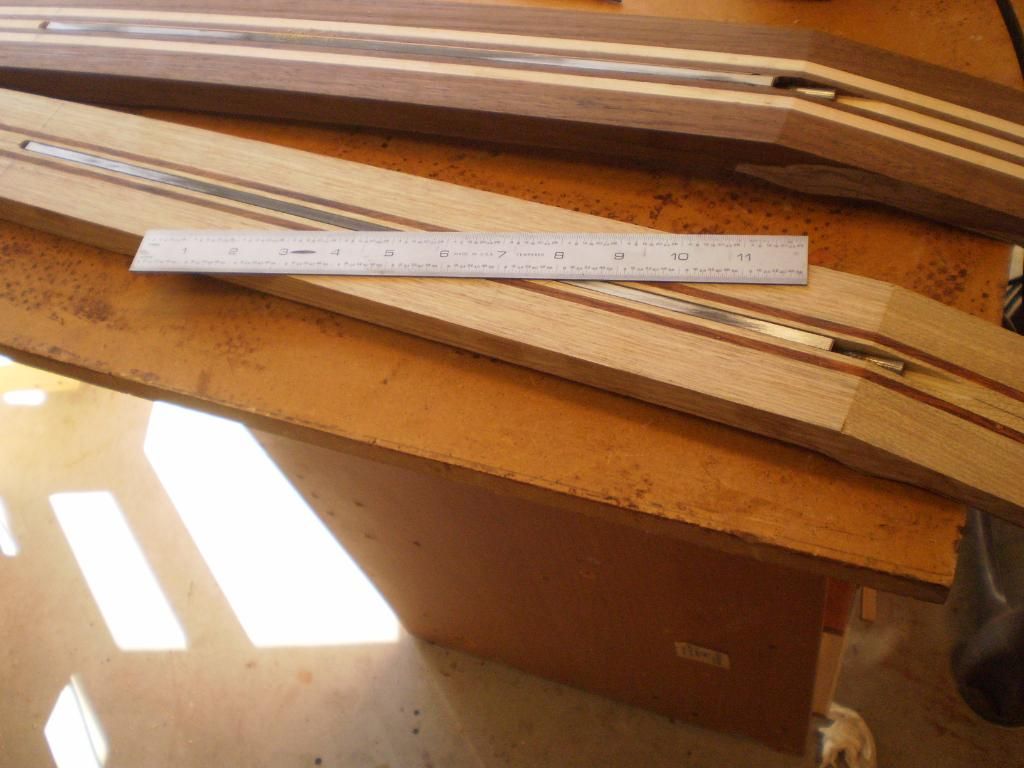
Using a plexi template allows me to see the lines for centering. However I don't route against the plexi templates. The router bearing gets hot, melts the plexi, and at best ruins the template - at worst it ruins the template and the piece. I always make router templates from 2 pieces of 1/4" hardboard glued together.
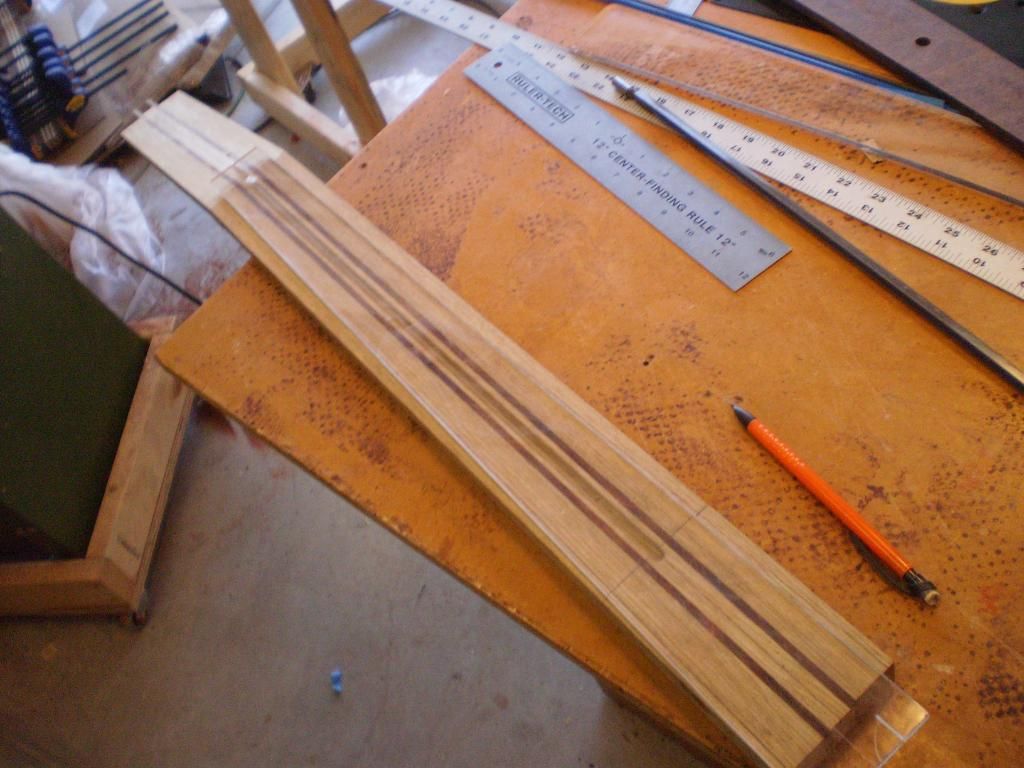
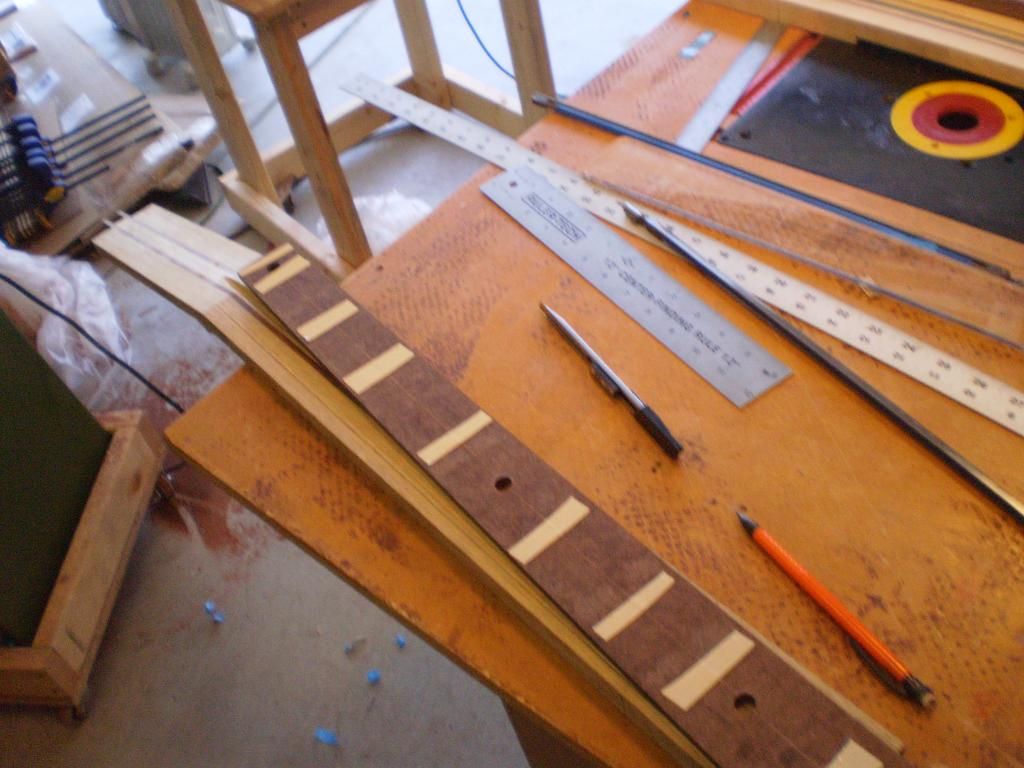
After bandsawing I sand the edges further so that the router bit doesn't have to cut more than 1/2 the cutters on the bit.
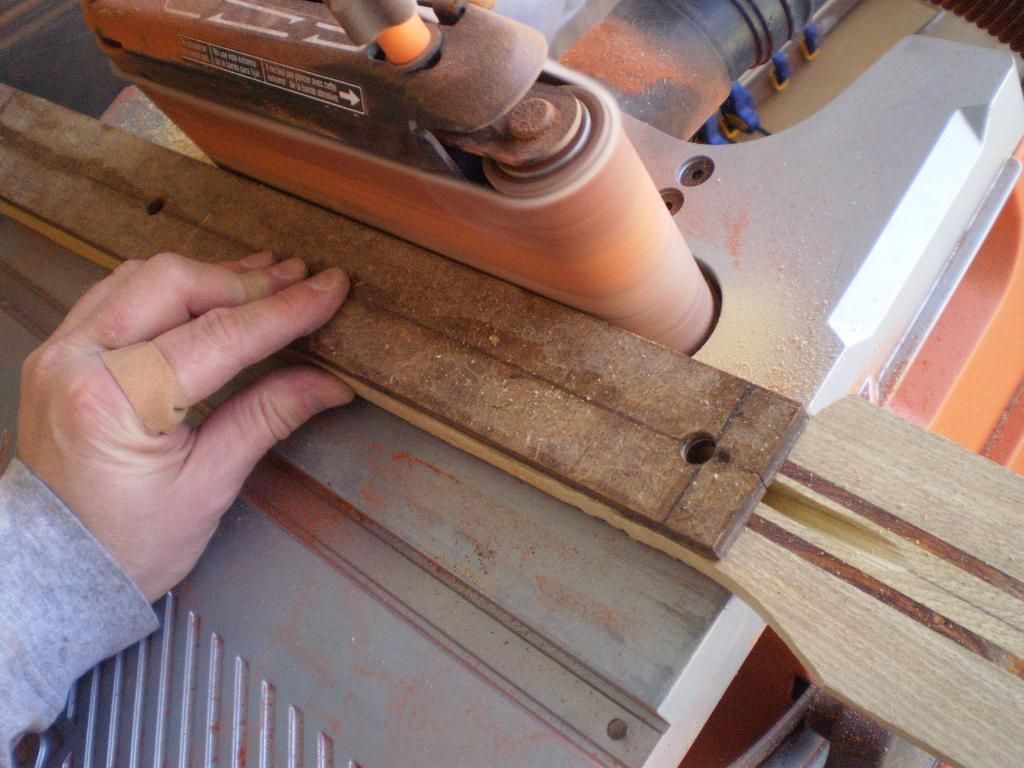
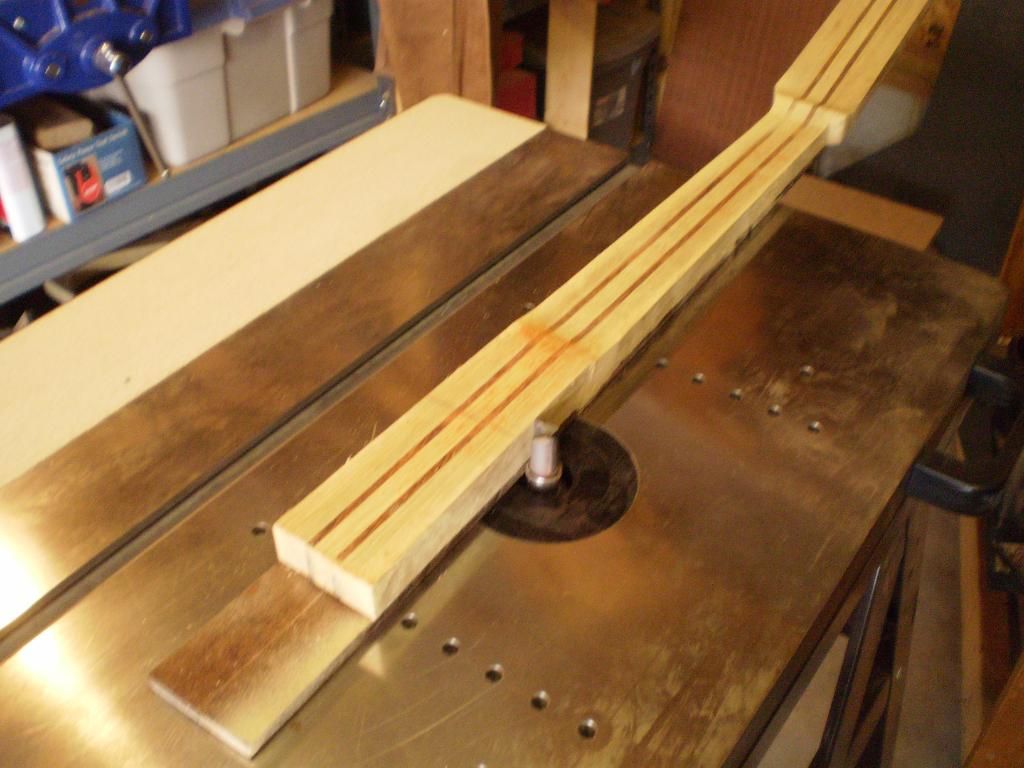
Here is a close up of the depth the router actually cuts away. Remember not to hit the template.

And done.
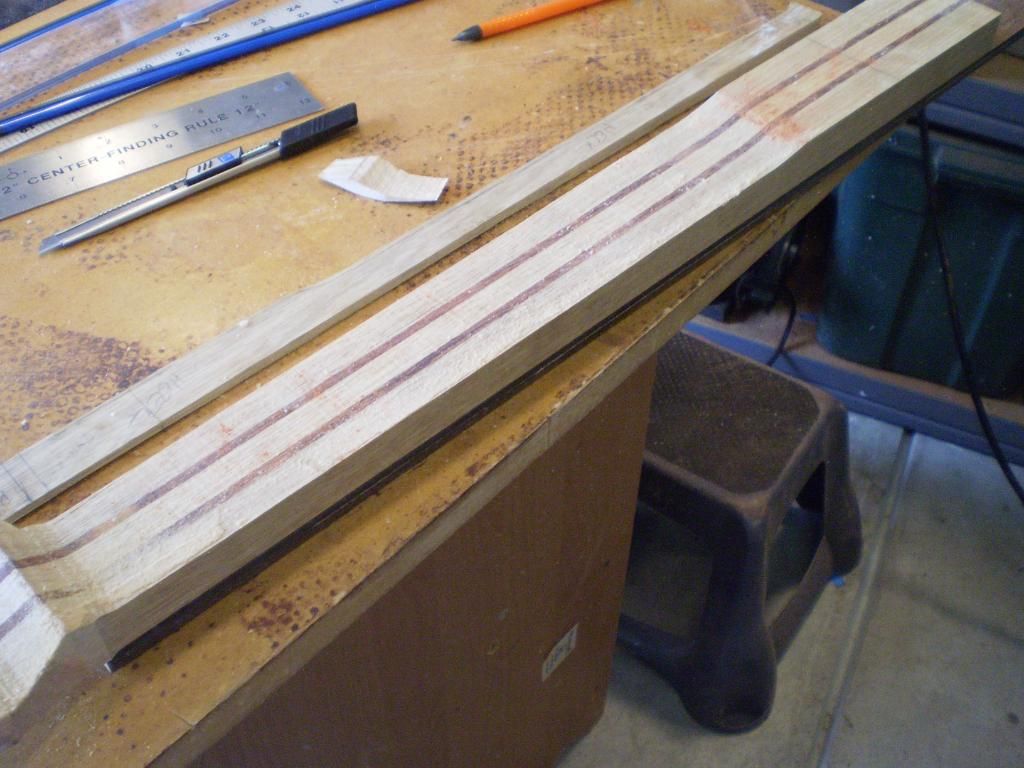
No comments:
Post a Comment
Note: Only a member of this blog may post a comment.